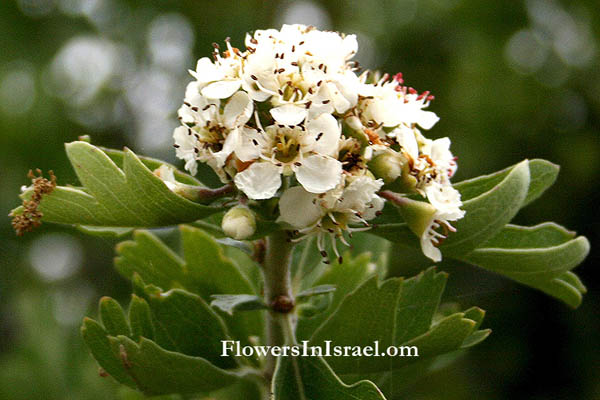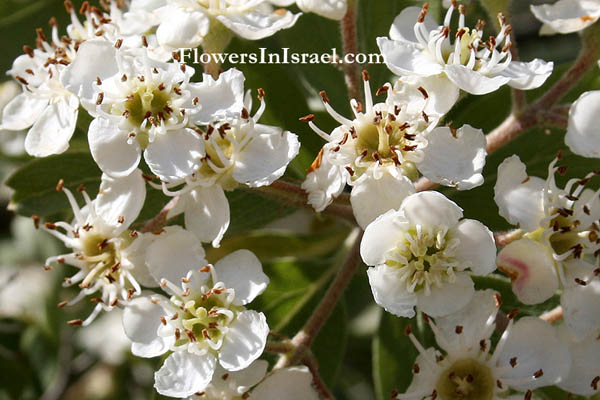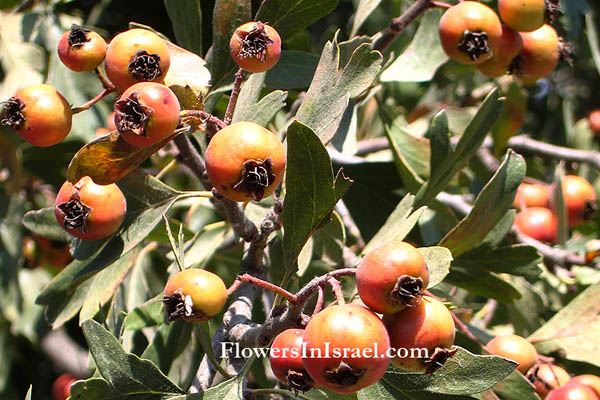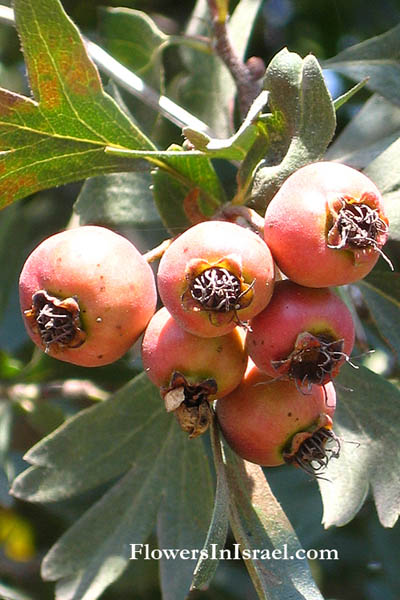Mediterranean medlar, עוזרר אדום ,زعرور
| Scientific name: | Crataegus azarolus L. | |
| Common name: | Azarole Hawthorn, mosphilla, Mediterranean medlar | |
| Hebrew name: | עוזרר אדום | |
| Arabic name: | زعرور, Za'rur | |
| Plant Family: | Rosaceae, ורדיים |

|
| Life form: | Tree | |
| Spinescence: | Stems | |
| Stems: | Up to 6 m tall, trunk is scabrous, branches rather upright-growing, dense and thorny | |
| Leaves: | Alternate, dissected once, dentate or serrate | |
| Flowers: | White | |
| Fruits / pods: | Pome, a fleshy fruit with a thin skin, not formed from the ovary but from another part of the plant (Accessory Fruits); seeds are contained in chambers in the centre of the fruit | |
| Flowering Period: | April, May | |
| Habitat: | Mediterranean maquis and forest | |
| Distribution: | Mediterranean Woodlands and Shrublands | |
| Chorotype: | Mediterranean | |
| Summer shedding: | Perennating |

Derivation of the botanical name: Crataegus, Greek kratus, kratys "strong, mighty," kartos "strength", because of the great strength of the wood, and akakia,akis "tip, thorn, a sharp point" or aigos "a goat," Latin crataegum for the kernel of the fruit of the box-tree (Plinius). azarolus, from Arabic Za'rur, the name of the fruit. Hawthorn from haw, originally an Old English term for hedge (from the Anglo-Saxon term haguthorn, "a fence with thorns"), also applies to the fruit. The Hebrew name: עוזרר, ozrar is mentioned several times in the Mishnah (Tithes, Demai, Kilayim, Okatzim), by the names ozrar or ozrad. Since in Arabic the name za’arur, za'rur (tiny, i.e. tiny apple) has been preserved, it is called ozrar in Modern Hebrew.


|